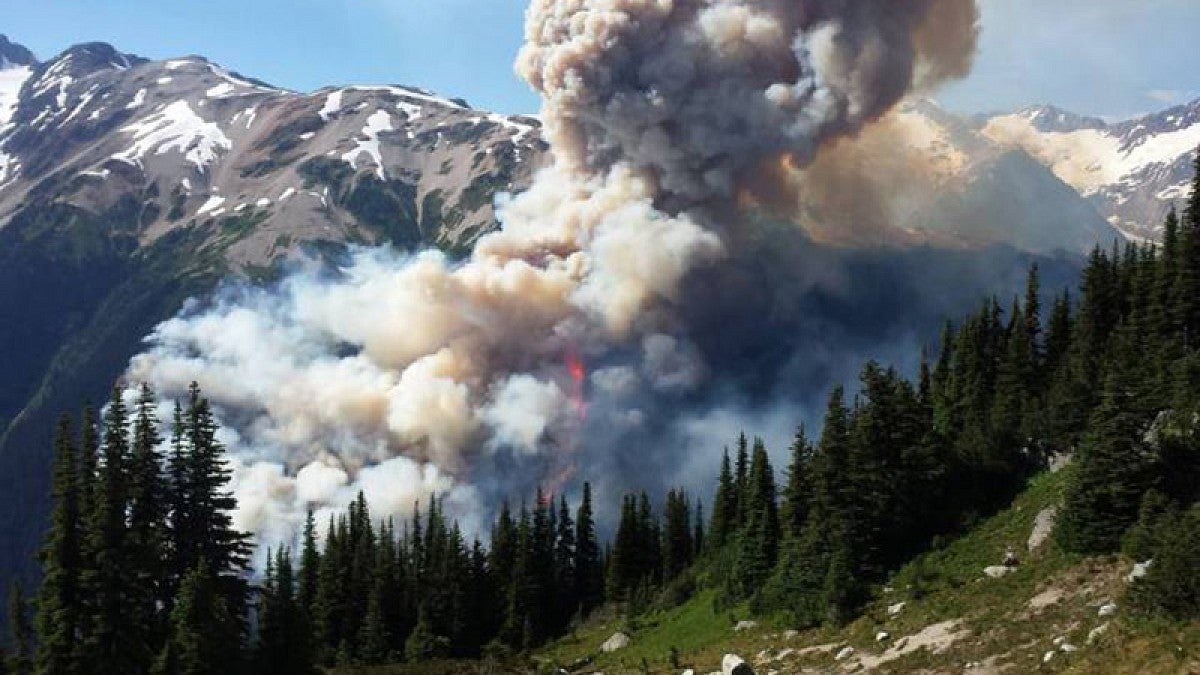A chance observation while doing research for a master's degree in another subject eventually led Kira Hoffman, a doctoral student at the University of Victoria, to work alongside UO geographer Dan Gavin and uncover new information on the use of fire by native Northwesterners.
While studying soils on Hecate Island off British Columbia, Hoffman, a former forest firefighter, spotted a fire-scarred cedar tree. Her later return to investigate led to an unexpected conclusion: Indigenous populations likely had a hand in fires that occurred over a 517-year period ending with the biggest fire, in 1893, which coincides with their removal to the mainland.
"Finding this fire evidence was an accident and I was really surprised because there had been no evidence of fire on the central coast of British Columbia," Hoffman said. "The more I looked, the more I found. We know that the fires were smoldering ground fires because they didn’t kill the trees that they scarred, and they didn’t fully burn ground fuels."
The study she led was published Oct. 26 in Royal Society Open Science, an open-access journal. The tree-ring dating, in which fire scars were matched with the age-defining rings, was analyzed along with climate data spanning the last 700 years to look for patterns and potential causes of fire.
To help Hoffman learn what the trees were trying to tell her, she spent five months as a courtesy research associate with Gavin's research group in early 2015 to learn an analytic approach Gavin had created to correlate wildfire occurrences with respect to other fires and past climate events. The approach, he said, was his own adaption of a technique that neuroscientists had created to study connections between firing neurons and movements elsewhere in the body.
"The method helps to search for the synchrony of events through time," Gavin said. "It helped Kira sort out various patterns — annual, decadal or longer timescales — of fire events on the island."
Hoffman also chose Gavin to mentor her, she said, because of his previous research on fires in coastal temperate rainforests in Clayoquot Sound, British Columbia. As a doctoral student at the University of Washington at Seattle, Gavin also identified fire patterns prior to the 1870s on Vancouver Island.
"Fire is historically important in the West," Gavin said. "There is a lot of evidence from fire scars throughout the Pacific Northwest, not just in the dry pine forests, that point to more frequent fires having occurred before 1900."
Hecate Island's isolated location provided an ideal place for the new study, which helps fill a void in the historical record about the frequency of fire activity in the wet upper reaches of the Pacific Northwest, Gavin said.
"The island was little affected by fire suppression or 20th century land uses, which makes attributing pre-20th century fire to human causes simpler than is possible in other places in the Pacific Northwest," he said.
The island gets more than 157 inches of rain annually and is located in a region where both human- and lightning-caused fires have been considered rare.
The study drew data from some 3,000 trees and other vegetation from 30 plots in a 741-acre area that has three archaeological sites where indigenous populations lived. From 1376 to 1893, when these populations lived on the island, 13 fires occurred roughly every 39 years and tended to follow El Nino events by six to nine and 13 to 17 years.
The researchers found that fires were 25 times more likely to occur than previous estimates for greater than 1,000-year intervals, in which tree-ring records had not been used. They found little direct relationship between drought and fire years.
"It seems that fire events don’t have a pattern if you look only at weather in any given year," Hoffman said. "When we pulled back and look at longer climate patterns, we began to see that fires were linked to prolonged periods of warm and dry conditions that build up over time."
The absence of fire after indigenous people moved to the mainland in 1893, the researchers concluded, suggests that they likely used fire as a tool for resource management.
"It's possible they would have relied heavily on burning forests and single trees to create dry firewood for cooking and heating, clothing, canoes, food and many other resources," Hoffman said.
—By Jim Barlow, University Communications


